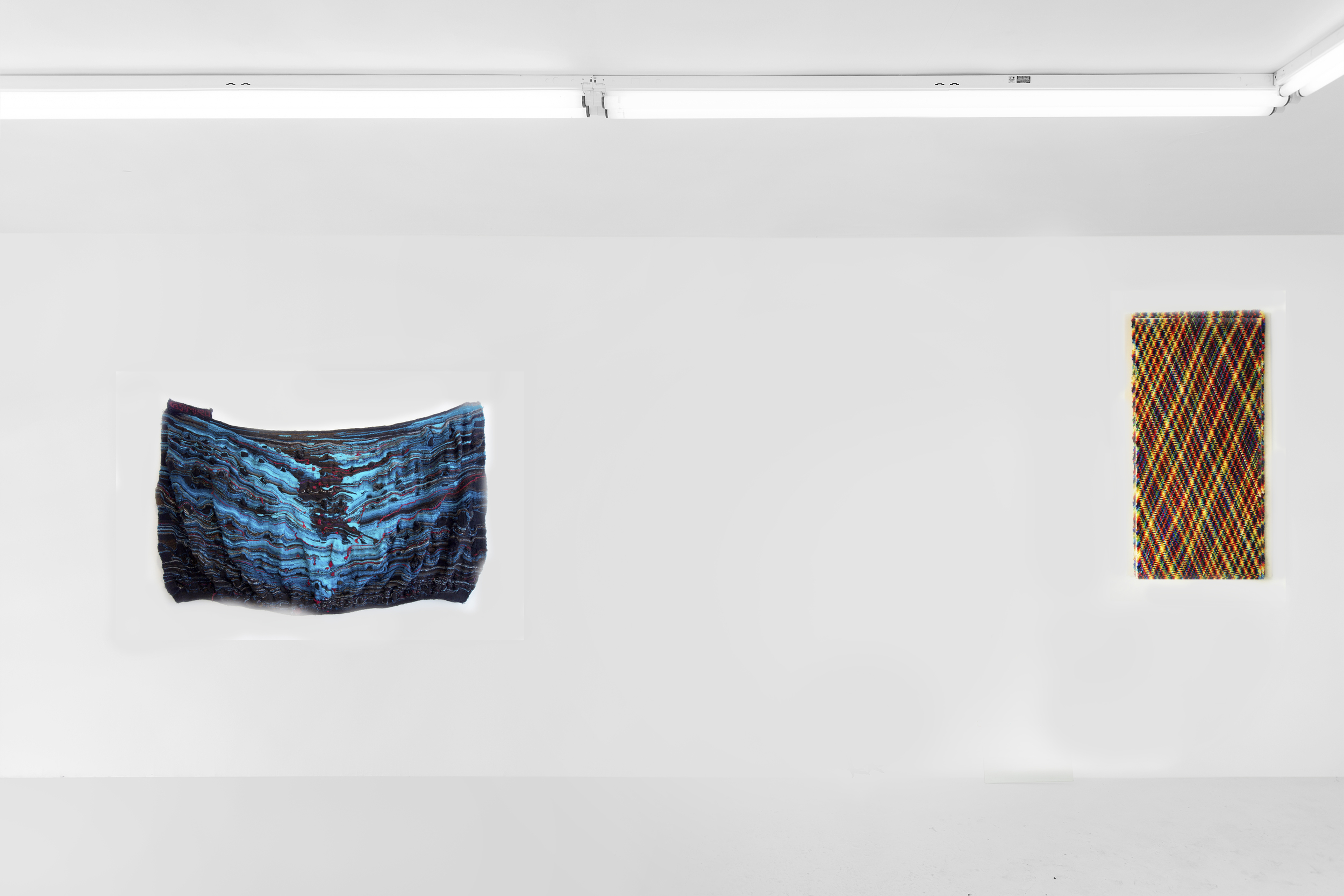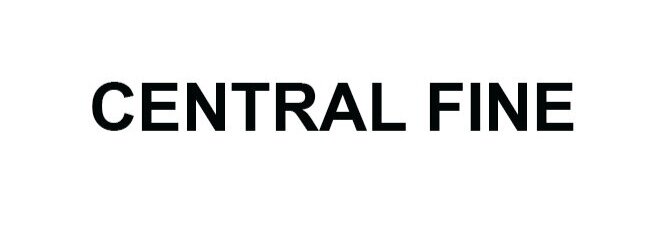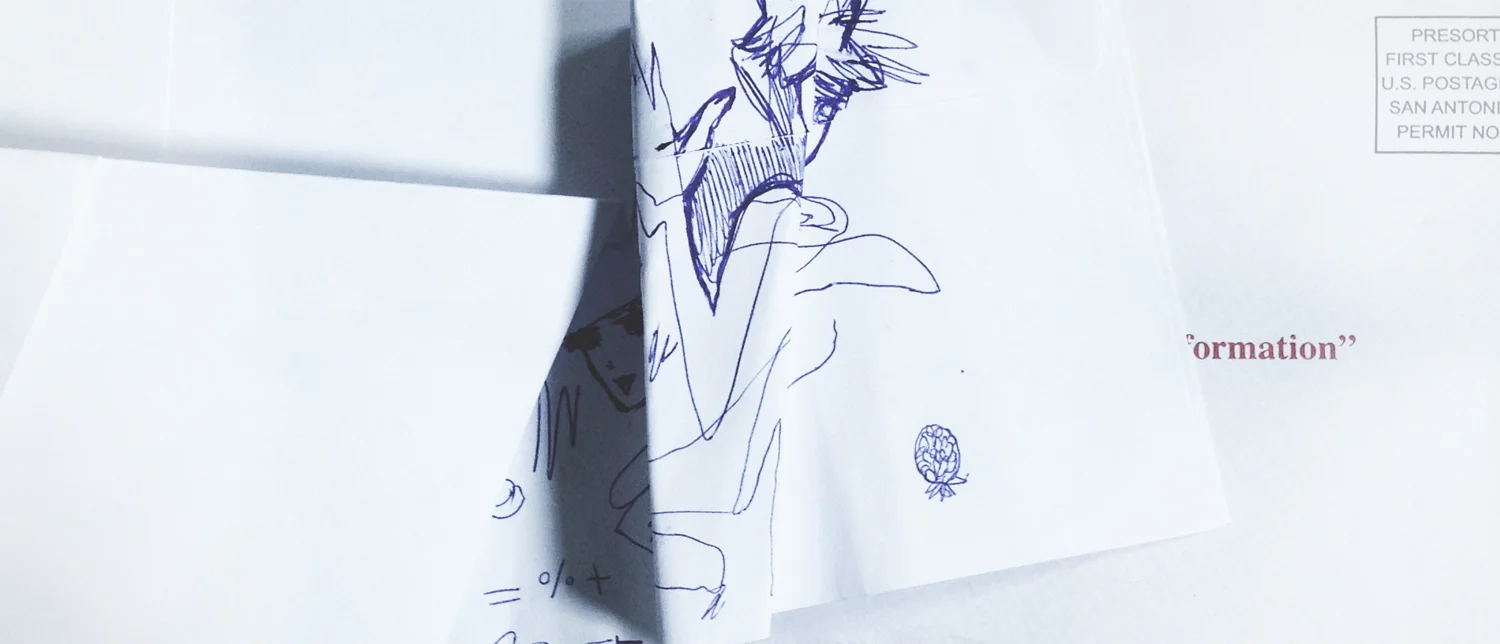THE OPENING OF AN ENVELOPE
Jesus Casimiro, Kyle Chapman, Tomm El-Saieh, and Maria Quispe
May 22 – June 4, 2016
Opening on Sunday, May 22 from 4-8PM
The car took me into a street where trees merged into a claw becoming one million screens. Perhaps the liquidity of mirrors calls for something beyond reflections multiplied ad-infinitum and the silver plane is where the engraving of texts, notes and scribbles can signal indelibly scattered thoughts, lists, etc. As if the malleability of the mirror stands for a perfect dictionary, where all thoughts are contained and registered, doubled, and like encyclopedic efforts, carved.
Kyle Chapman’s works engage with what appears to be veiled. In a recent series of engraved mirrors, Chapman tattoos the transparent and manages to double that mark through reflections. It is in the act of puncturing the ‘veil’ the one that brings forward an activity focused on itself and on the dissent towards the hyperventilation of self-imposed transparencies or the reflection’s policing of the self. The series presented in this exhibition addresses linguistic and narrative interests, drawing, and a journalistic drive; while remaining skeptical of the possibilities that language can afford, relying on the capacity of the mirror to present a constantly shifting ground capturing the work in its totality as an unfixed entity.
Jesus Casimiro’s work seems to point that when a tapestry becomes a text, a codified note about the outside, we can expect a language that is hermetic and soft to the touch. His works emerge and address the Quechua language, a language without a written archive that evolves via visual coding and oral tradition. Following this strong correlation between the linguistic and its material manifestations, his tapestries are made by a self-devised weaving technique called Cateña that alludes to Luracatao, his birth-town. The people in Luracatao are called Cateños, which imbues Casimiro’s weaving approach with a societal texture. Let’s take a look at this tight-knit bond: the Quechua spoken in Salta, Argentina is markedly different from the spoken Quechua in Jujuy, Peru, Bolivia, etc. What these dialects share is abstraction and an attempt at codifying society and nature through symbols, visual patterns and the mythological, as the Quechua language lacks any written preservation.
Abstract signs are maintained as a means of livelihood, communication, and integration. Such abstraction, far from being part of the ‘empty signs of abstraction’ or paternal formalism, shows up in patterns, ceramic objects, choice of materials... as ways to comprehend the symbolic and the imaginary as the Real, as opposed to perceiving them in separate planes.
Casimiro’s works then, take on the tradition of Quechua textiles and move beyond its parameters, weaving his idiosyncrasy into Pop art, Opt-art and obsession. Determined by color and its associations, Casimiro organizes his tapestries in a chromatic lexicon establishing meditative relationships: white signals a type of intellectual labor, a clarity of observation, a type of serene objectivity; purple stands for social organization (ayllu); red embodies a type of wisdom that is self-evident to the eye; green will point to agriculture, fauna, flora and the contact with the mother earth or Pachamama, and so forth. It is as if his tapestries tell an unwritten story through pattern and color while remaining specific and fluid.
Maria Quispe’s work addresses not being anywhere and being of the everywhere, acting on isolation in her remote Escoipe in Salta. In her practice, it is as if the songs, newspaper-clips and the political activism that inform her works become cyphers. One wonders if this political stance towards abstraction is happy with parody or with an actual re-shaping of the political. In her protest poems and songs, Quispe engages in a re-sensitization of the visual through actual dissent.
At the core of her practice is the chayai, which usually implies a reaction to imperialistic tendencies and a preservation of marginalized cultural manifestations. Traditionally, the chaya is delivered as a protest in an oblique way. By poeticizing nature and needs, issues are addressed via the camouflage of the voice and music, which leaves one thinking: ‘wow, that’s so beautiful’, to then realize what is broken via the violence of progress.
Tomm El-Saieh’s paintings consider a certain Haitian-ness, rhythmical-all-over abstraction and a political approach that implies a simultaneous engagement/distancing from the perceptions and the pictorial traditions of his country. From his generation, he is Haiti’s first painter addressing high modernist ideals and its dislocation from his pictorial heritage. Understanding abstraction as a political act is what links his work with Quispe’s work, aesthetically and conceptually.
El Saieh’s works, with its associations moving beyond the retinal, bring forward a complex weaving that announces that perhaps a filtering takes place in these paintings, an extraction of what comprises the very basic look of Haiti, its temperature and vibe remaining latent and potent. El-Saieh perhaps claims a stance in the formless, in the ground that is being developed by his own charting, a ground where tradition and its castrating impetus is faced by its own cut.
1Chaya, in this sense chayar is an act of singing praises to nature, expecting for rain, food, space and peace. It is prevalent in many Diaguita and Quechua populations and is a covert way of protesting imperialism and capitalistic/industrial take over.


